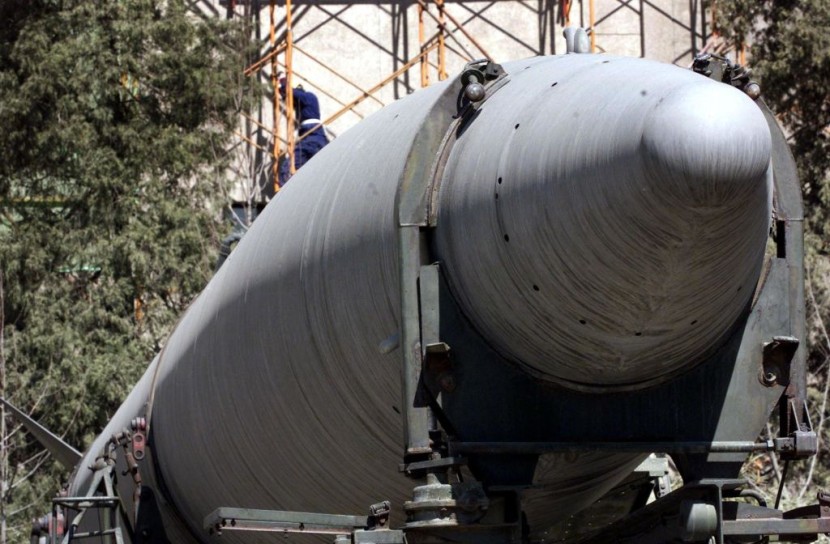China and the United States are set to engage in discussions on nuclear arms control next week, marking the first time such talks have taken place since the Obama administration.
The United States faces complex challenges in understanding the military intentions of its potential adversaries, as per The Guardian.
US-China Nuclear Arms Talks

Recent events, such as the Afghan military's sudden collapse and Russia's swift invasion of Ukraine, have raised concerns about the accuracy of US intelligence assessments.
As the United States shifts its focus to the People's Republic of China (PRC) and its growing military capabilities, whether US intelligence can accurately gauge the "will to fight" of its adversaries takes center stage. The United States is currently engaged in discussions aimed at avoiding a potentially dangerous three-way arms race involving China and Russia.
These discussions reflect the Biden administration's efforts to foster diplomatic engagements that address the deteriorating relationship between the United States and China, spurred in part by the downing of an alleged Chinese spy balloon over US territory.
However, these talks do not constitute formal negotiations for nuclear arms limitations. One of the critical concerns is China's military modernization efforts, with intelligence suggesting the People's Liberation Army (PLA) has been instructed to be prepared to take Taiwan by force as early as 2025.
The Pentagon's annual China Military Power Report, issued recently, warned that China's nuclear arsenal is growing faster than expected. It also highlighted China's intentions to expand its conventional missile forces and enhance its naval and aerial capabilities.
While these developments underscore China's growing capabilities, questions linger about how the PLA would fare in an actual conflict. The last time Chinese forces engaged in combat was in 1979 during a conflict with Vietnam.
According to a senior defense official, China's military has "a long way to go" to meet the necessary military capability to advance its global security and economic interests. US Defense Intelligence Agency Director Scott Berrier expressed confidence in the agency's ability to assess China's military growth accurately.
Despite the complexity of the task, Berrier stated that they had closely monitored China's military development for several years with a high intensity, according to NDTV.
Read Also: Venezuela's Supreme Justice Tribunal Suspends Opposition Primary Despite Electoral Deal
China's Evolving Capabilities
He emphasized that China's capabilities were being scrutinized as they continued to expand and evolve. One challenge for US intelligence agencies is understanding the "will to fight" of adversaries, which has proven to be a problematic task in the past.
This challenge became evident during the US withdrawal from Afghanistan, where the Afghan military's will to fight was underestimated, leading to its sudden collapse. A similar miscalculation occurred during the Russian invasion of Ukraine, where US intelligence underestimated the Ukrainian forces' ability to resist.
Berrier acknowledged these past misjudgments and pointed to a need for reevaluating how intelligence analysts approach military assessments. He noted that in the case of Russia, the focus had been too heavily on Moscow's military hardware improvements while overlooking gaps in training and leadership.
"Through years of counterterrorism analysis and operations," he explained, "we kind of took our eye off the ball."
China, too, has been closely watching recent conflicts like Russia's invasion of Ukraine, learning from the experiences of others. This observation aligns with a growing trend in modern warfare, emphasizing the importance of well-trained and adaptable military forces.
Berrier noted that China is likely considering various scenarios within the Indo-Pacific region, drawing insights from recent global conflicts. As the United States and China engage in discussions and monitor each other's military activities, accurately assessing an adversary's "will to fight" remains a challenging task for US intelligence agencies.
The lessons learned from past misjudgments in Afghanistan and Ukraine highlight the need for continuous evaluation and adaptation of intelligence analysis methods.
The United States must strive to enhance its ability to understand the evolving strategies and intentions of potential adversaries, ensuring its national security interests are safeguarded in an increasingly uncertain world, Voice of America reported.
Related Article: China Sees Biden-Xi Meeting in November 'Won't Be Smooth Sailing'








